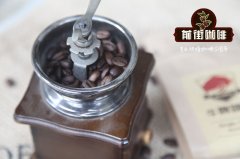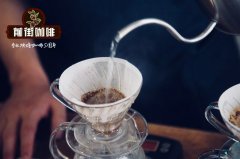Essential knowledge of using Philharmonic pressure get Philharmonic pressure straight legislation and new skills of inversion method

Professional coffee knowledge exchange more coffee bean information please follow the coffee workshop (Wechat official account cafe_style)
The necessary knowledge of using Philharmonic pressure
As mentioned earlier, the operation mode of Philharmonic pressure is too simple, but as long as it is to make coffee, there is always something to pay attention to.
In short, like other coffee brewing, you still need to pay attention to the water temperature. Boiling water will make the coffee bitter, so you must use hot water instead of boiling water. In order to reach the proper temperature, you can boil the water and let it stand for about one minute before using it. If you want to be more accurate, I recommend 90 degrees, while Philharmonic pressure officially recommends 80 degrees.
In addition, you have to use freshly roasted high-quality coffee beans, even with a cheap blade grinder. Grind to a medium scale similar to that of hand-brewed coffee, with a thickness about between the fine grinding of espresso and the coarse grinding of French filter pressure. You can refer to the teaching of GOAT CAFE: "if the downpressing is difficult, the coffee powder scale is too fine; the downpressing is too easy and fast, which means the scale is too thick, so you can make appropriate adjustments."
Here comes the finale! Philharmonic pressure brewing teaching
Philharmonic pressure bubble is divided into general straight legislation and inversion method, this article will explain the first way, inversion method can refer to the clear teaching of GOAT CAFE, and its straight legislation also has some differences, might as well try more.
The upright brewing method can make about 1-2 cups of coffee.
Materials
Water, high quality coffee beans
Apparatus
General or electric kettle
Philharmonic pressure (including measuring spoon, funnel and mixing rod)
Bean grinder
Mugs or small brushed steel cups
Timer (may be omitted)
Brewing step
1. Boil water: let the water boil for one minute, the water temperature is about 80-90 degrees.
two。 Grind coffee beans: measure two Philharmonic pressure spoons of coffee beans (about 4 tablespoons) and grind to medium scale.
3. Wet filter paper: spread the filter paper on the filter cover, buckle the back of the pot, place it on the mug, gently pour some warm water to wet.
4. Pour in the coffee powder: place the funnel on the pot, and then pour the coffee powder in to prevent the residual powder from getting stuck on the edge.
5. Pour in hot water: until the kettle body is marked.
6. To stir slightly quickly.
7. Pressurization: insert the piston cylinder into the kettle body and press down at the same speed for about 10-20 seconds. Remember that the desktop should be kept stable and non-skewed to avoid uneven extraction under pressure. The containers at the bottom can be made of metal and other more pressure-resistant materials, which is safer.
8. Dilute after trying the concentration: if you think it is too strong, you can add the right amount of hot water.
In fact, in addition to the various benefits mentioned in the article, the editor thinks that Philharmonic pressure can also take into account environmental protection, because its filter paper is much smaller than that of hand-brewing coffee, and it will not be wasted if it uses a metal filter.
Finally, it is exciting to be able to make coffee with pure flavor so easily and quickly. However, the French filter pot also has its unique and rich taste, and some people especially like the taste of coffee grounds, and how to improve the technology of hand-brewing coffee is the common goal of many coffee lovers; in addition, there are even household espresso machines on the market. In other words, there is no difference between the advantages and disadvantages of all kinds of coffee utensils, their flavors are different, and their personal preferences are also different. maybe you should give it a try. you can choose your own coffee time at any time according to your mood and needs.
Important Notice :
前街咖啡 FrontStreet Coffee has moved to new addredd:
FrontStreet Coffee Address: 315,Donghua East Road,GuangZhou
Tel:020 38364473
- Prev

Where does Philharmonic pressure come from? what is the principle and structure of Philharmonic pressure? you will fall in love with the six Philharmonic pressure.
Professional coffee knowledge exchange more coffee bean information please follow the coffee workshop (Wechat official account cafe_style) where does the Philharmonic pressure come from? In 2005, Alan Adler, an engineer, physicist and lecturer at Stanford University, found that he really didn't have the patience to use the troublesome plug-in coffee maker and didn't even want to spend four minutes making coffee by hand.
- Next

Philharmonic pressure-an easy-to-use but somewhat "dangerous" coffee artifact
Professional coffee knowledge exchange more coffee bean information please follow the coffee workshop (Wechat official account cafe_style) Philharmonic pressure super-useful but somewhat dangerous coffee artifact for those who clamor to see the Philharmonic pressure! Come on out! (here should check the teacher's dynamic meme) the first question: who invented the Philharmonic pressure? Learn about the past of the inventor in order to
Related
- Beginners will see the "Coffee pull flower" guide!
- What is the difference between ice blog purified milk and ordinary milk coffee?
- Why is the Philippines the largest producer of crops in Liberia?
- For coffee extraction, should the fine powder be retained?
- How does extracted espresso fill pressed powder? How much strength does it take to press the powder?
- How to make jasmine cold extract coffee? Is the jasmine + latte good?
- Will this little toy really make the coffee taste better? How does Lily Drip affect coffee extraction?
- Will the action of slapping the filter cup also affect coffee extraction?
- What's the difference between powder-to-water ratio and powder-to-liquid ratio?
- What is the Ethiopian local species? What does it have to do with Heirloom native species?

